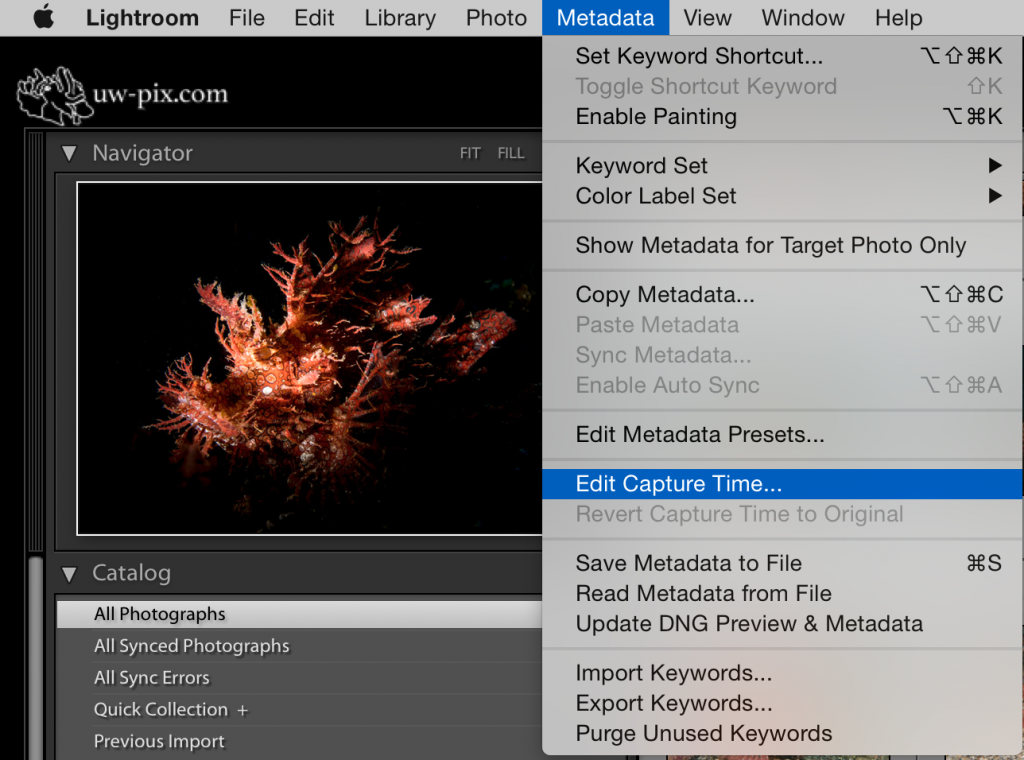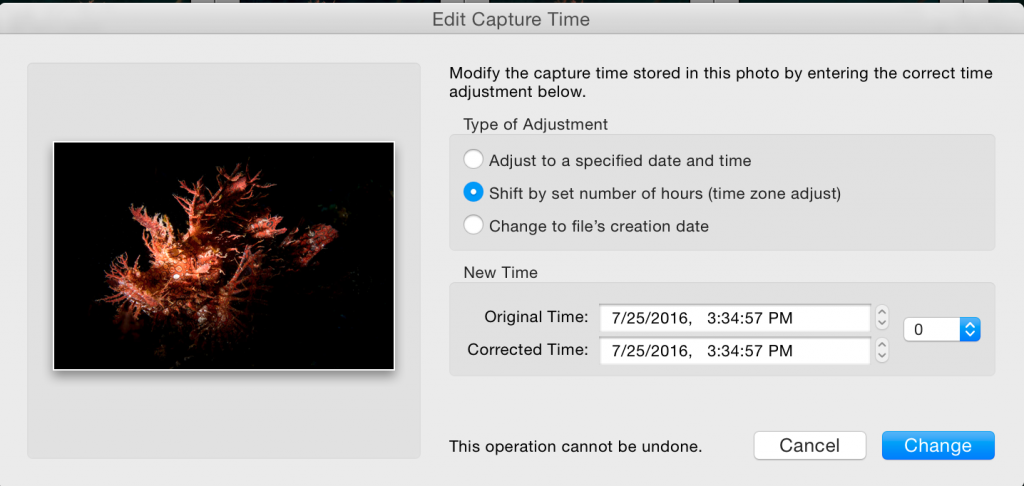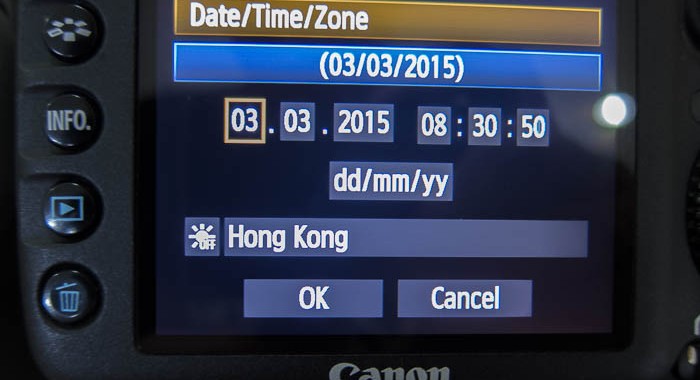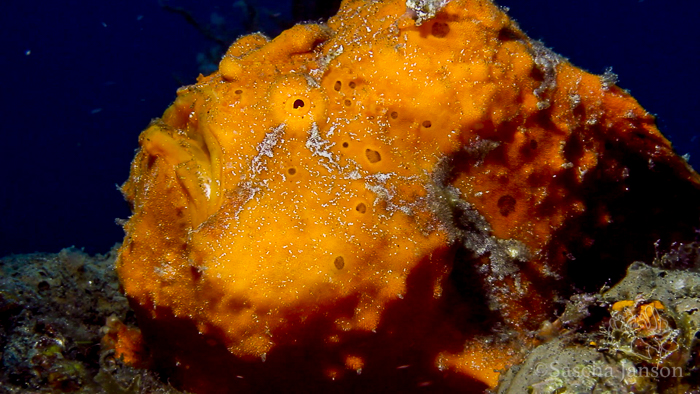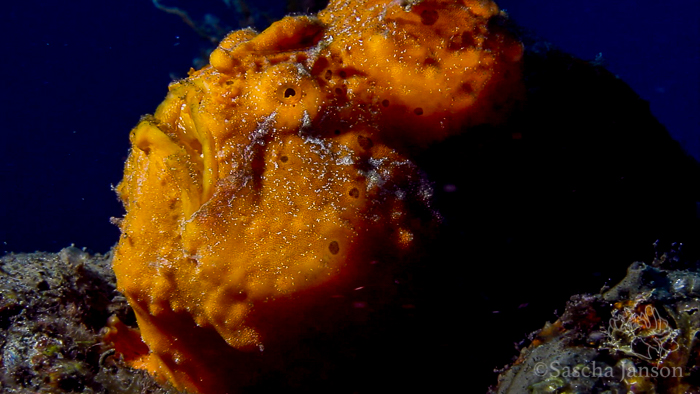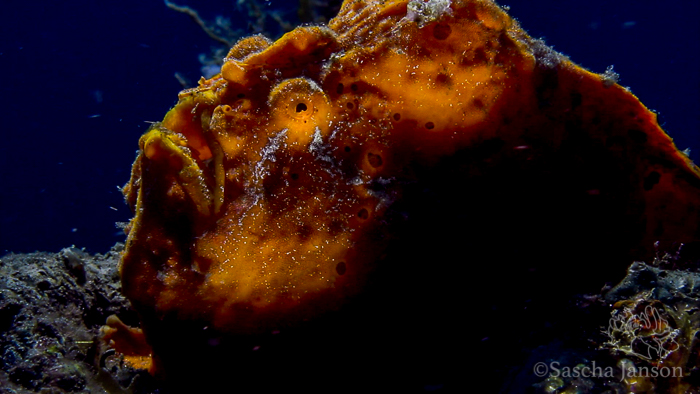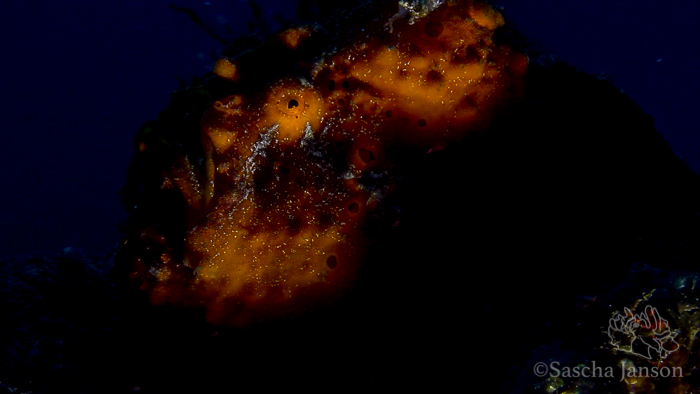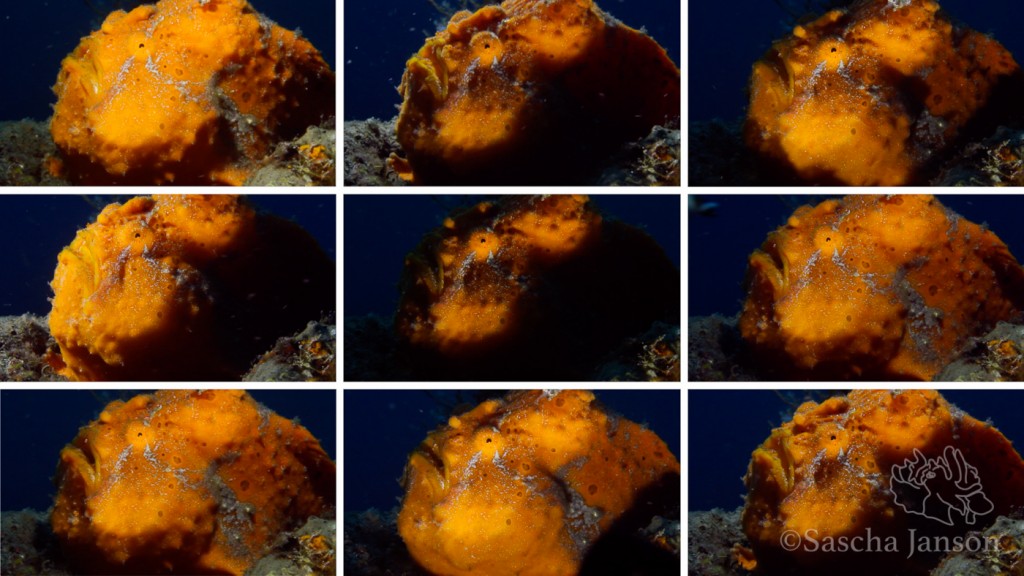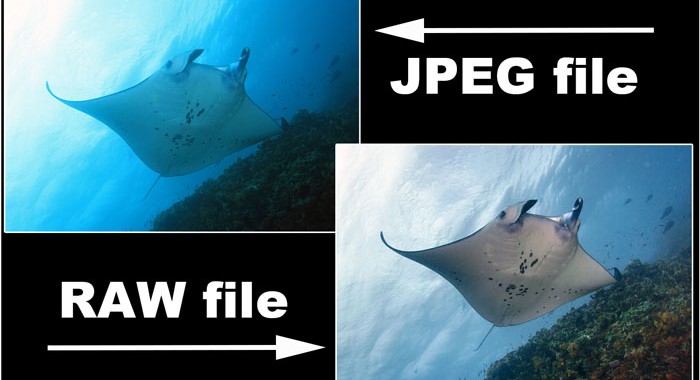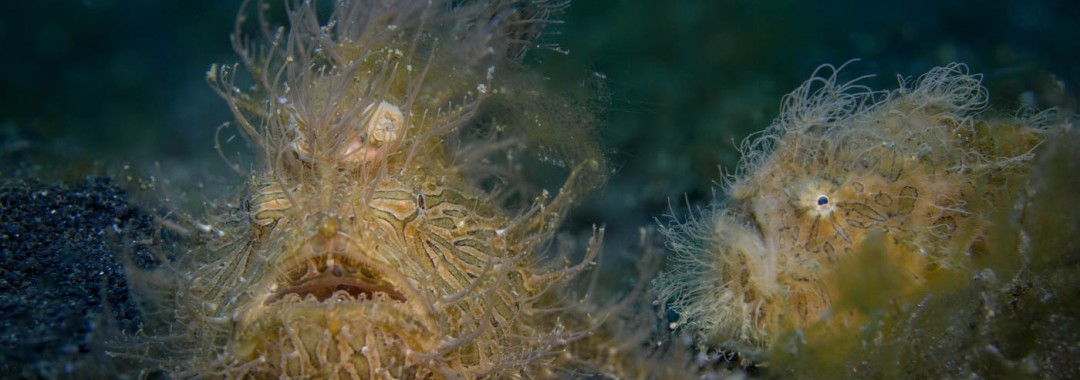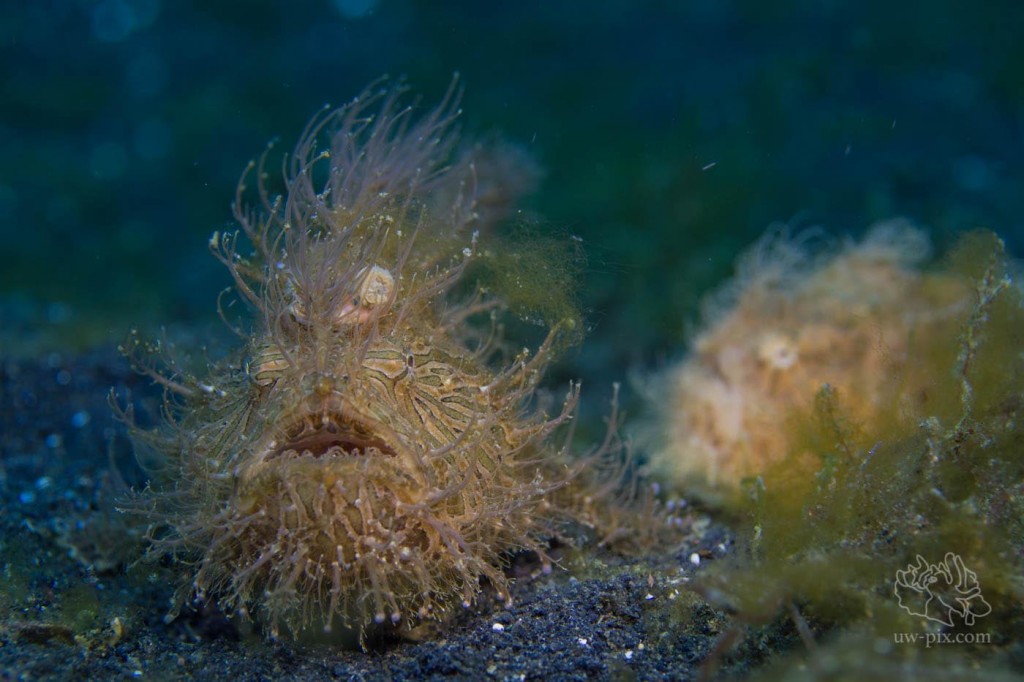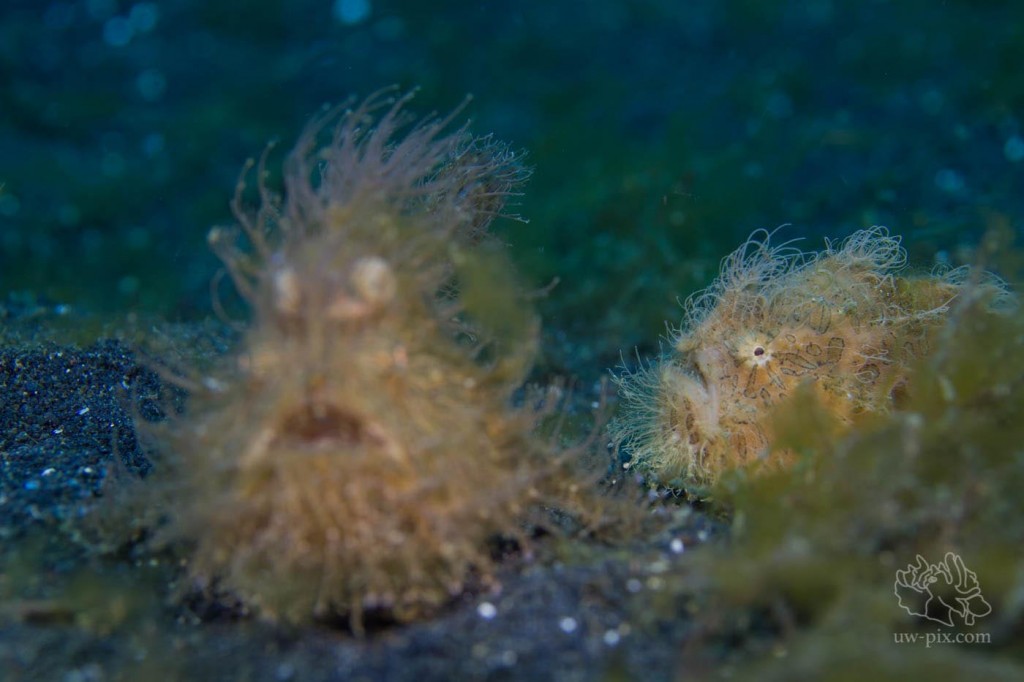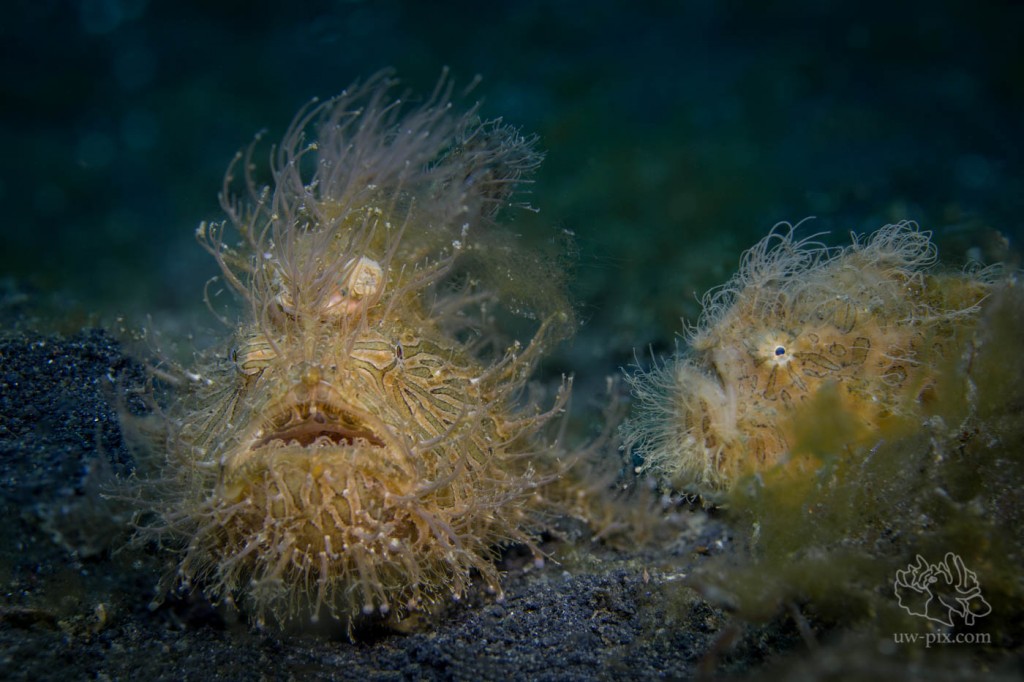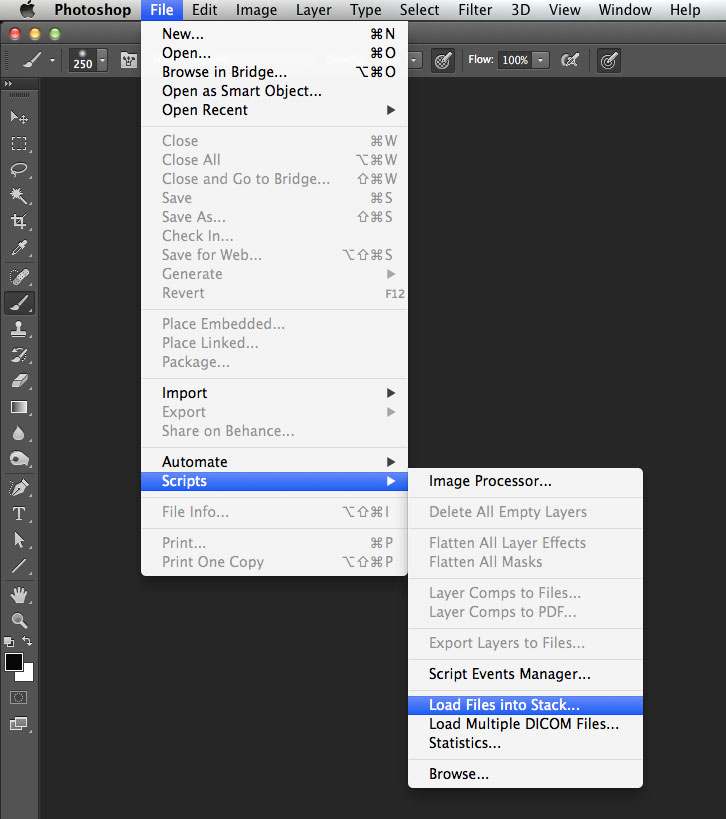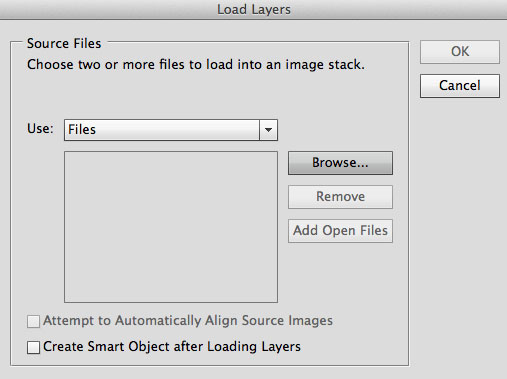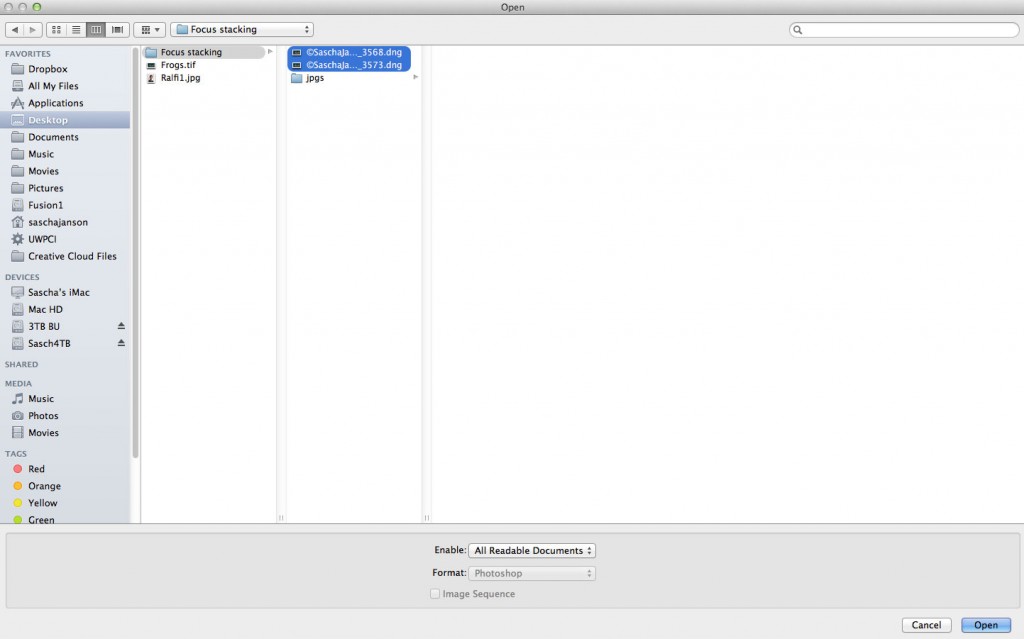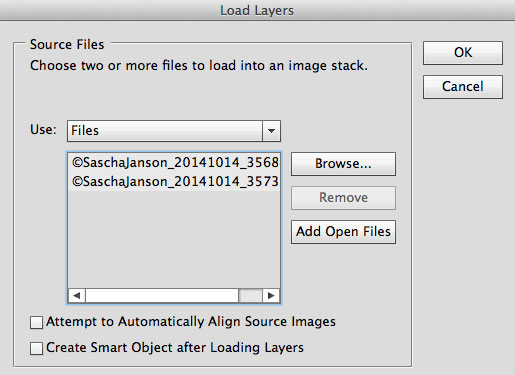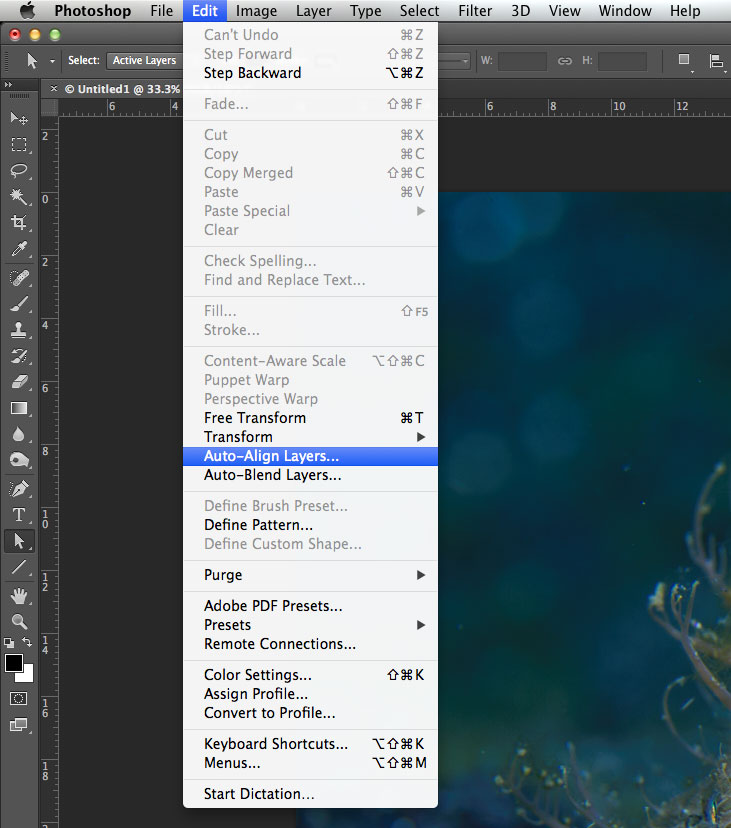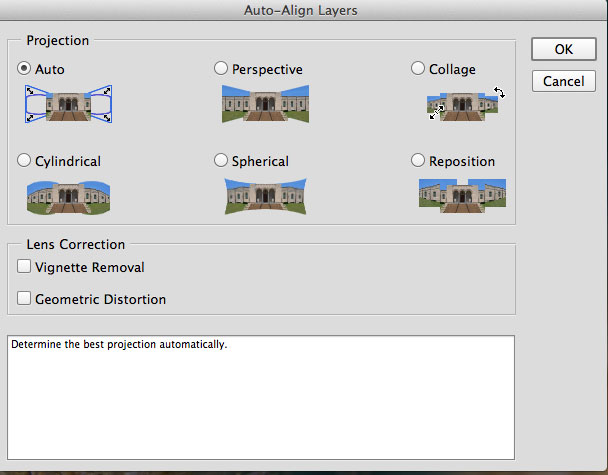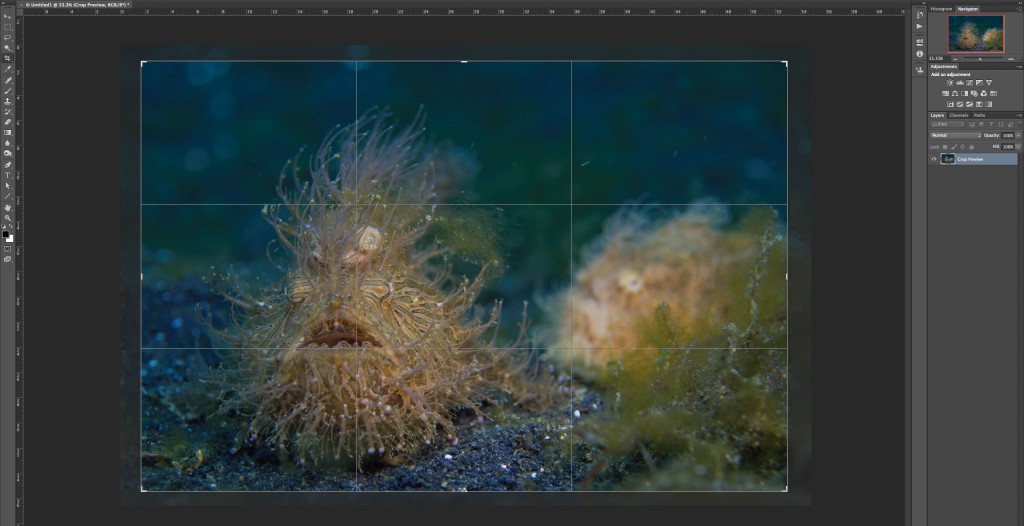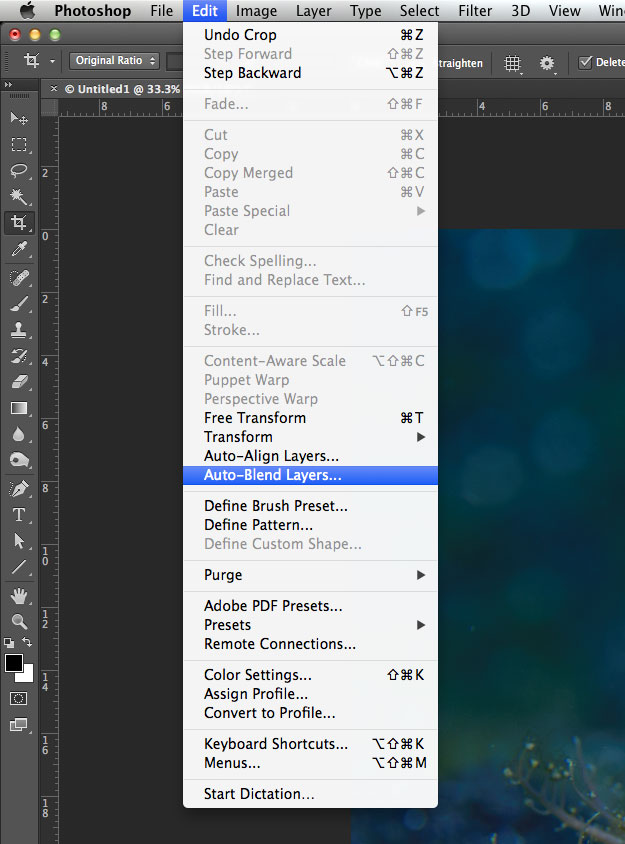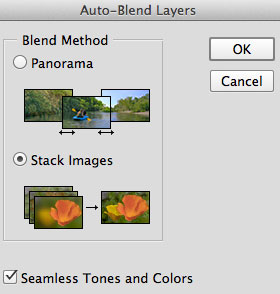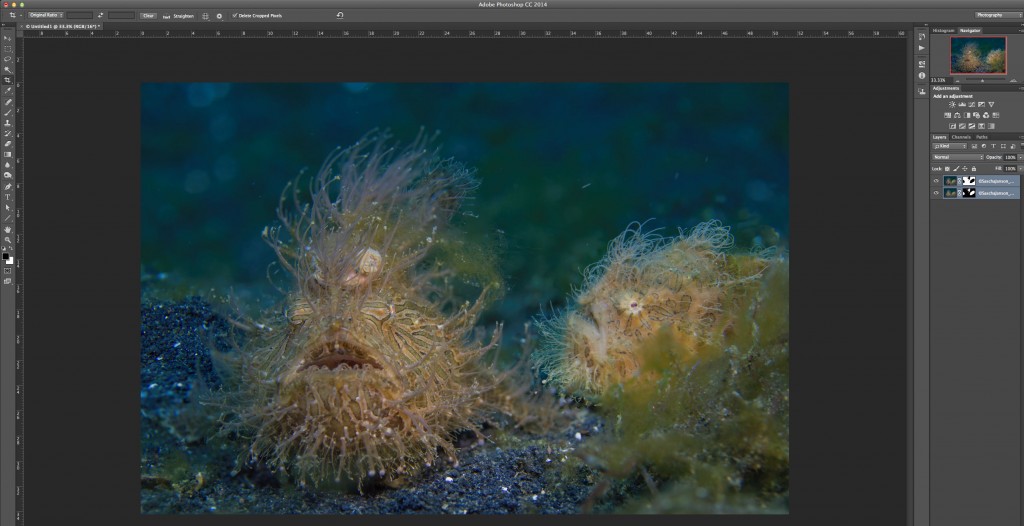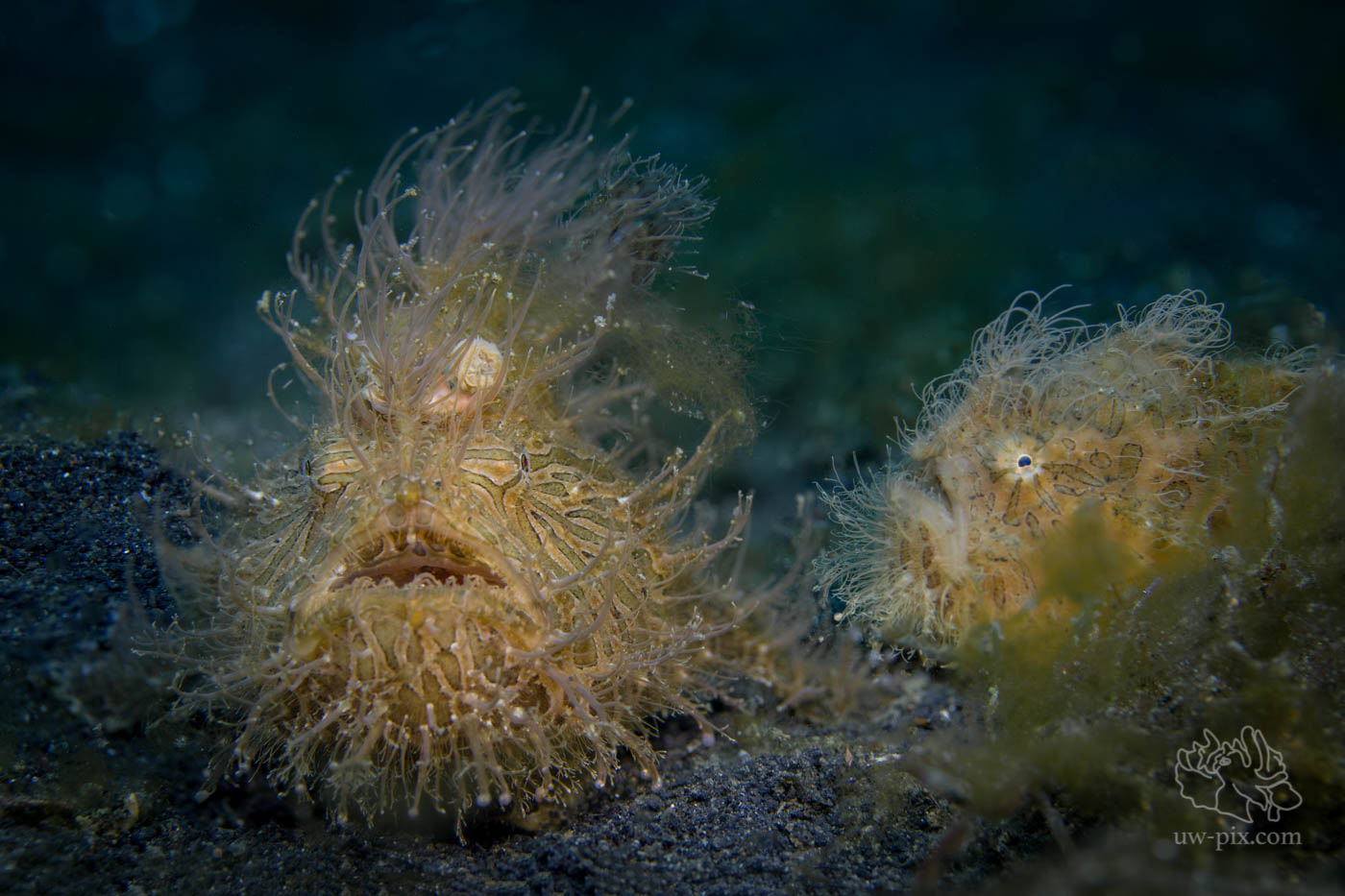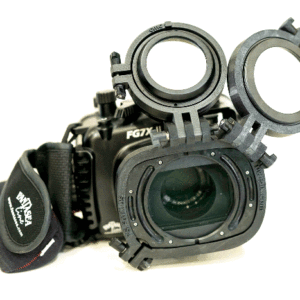For shooting with strobe(s), I recommend using MANUAL mode:
F8.0 (for maximum depth of field) – (F11 on G7x)
1/250sec or faster (for minimizing ambient light)
ISO 80 or 100 (for minimal noise) – G7X: ISO 125
AWB (when shooting RAW it doesn’t really matter – we can make a white balance later in post-production)
BKT OFF
Single Shot (when shooting with strobe(s))
Self Timer OFF
Spot metering (doesn’t do anything when shooting in manual mode, but if you’re shooting in program modes it just measures the light on the spot and not the overall image)
4:3 (shoot at max resolution, you can crop later if needed)
RAW (I’m shooting only raw, if you want JPEG, I recommend setting the camera to RAW & JPG large so you’ll have RAW images for later use)
ND filter This filter will cut your exposure by -3 stops. Use it if the image is still overexposed with minimum strobe power or if you want a black background. It’s very useful when shooting super-macro with a close-up lens like the INON UCL 165, INON UCL 100, SubSee+5, SubSee+10, or Nauticam SMC.
When shooting super-macro with a close-up lens you have to use the zoom to get the best possible result. If you want the maximum magnification, zoom in all the way (make sure to switch the Digital Zoom OFF), then get very close. The distance depends a bit on the lens, but typically I would say between 3-6cm / 1-2inches away from the subject (the subject should get in focus automatically when the continuous AF is set to on), half-press the shutter until you get the green or blue square and shoot.
Practice first on land to avoid wasting valuable time underwater!
Here are some shots I took with a single strobe:
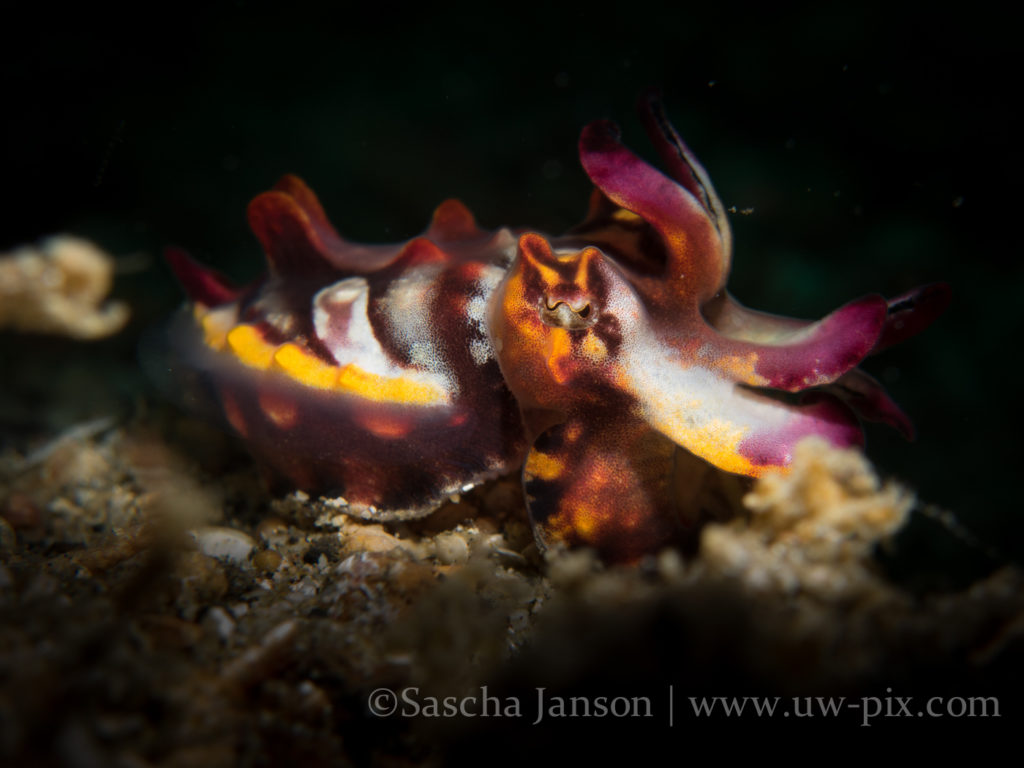
Flamboyant cuttlefish (Metasepia pfefferi) shot with S120 in manual mode (f8, ISO80, 1/400sec, 1x INON UCL165 macro lens, 1xINON D2000)
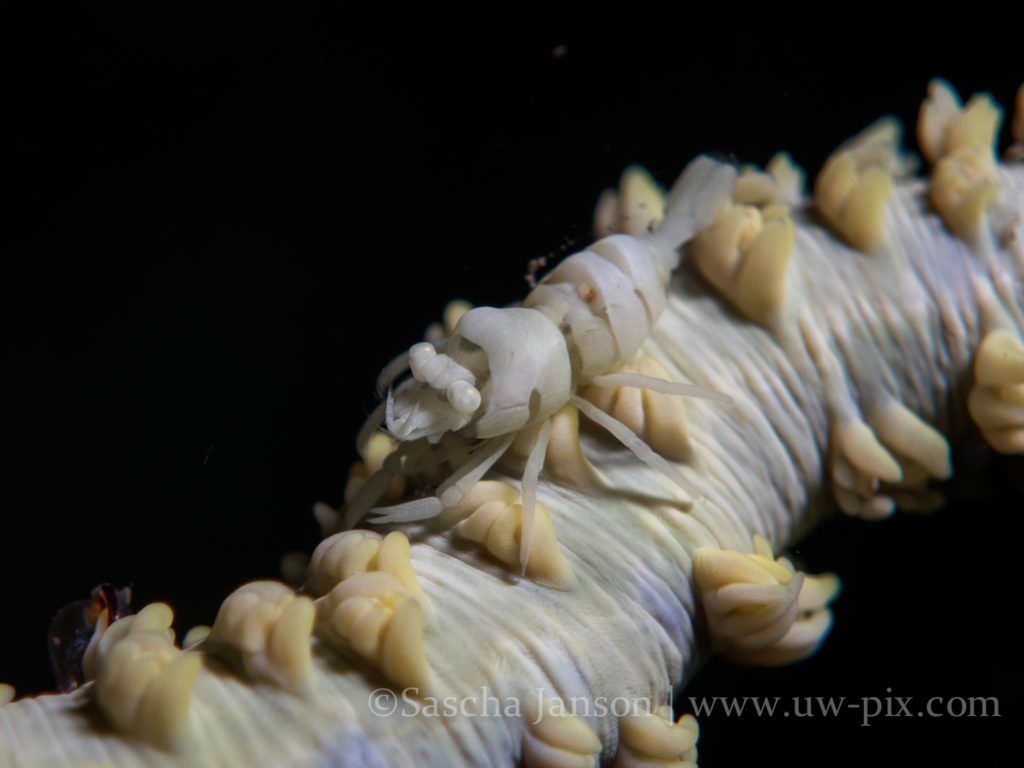
Wire coral shrimp (Pontonides uncigar) shot with S120 in manual mode (f5.7, ISO80, 1/800sec, ND filter ON, 1x INON UCL165 macro lens, 1x INON D2000)
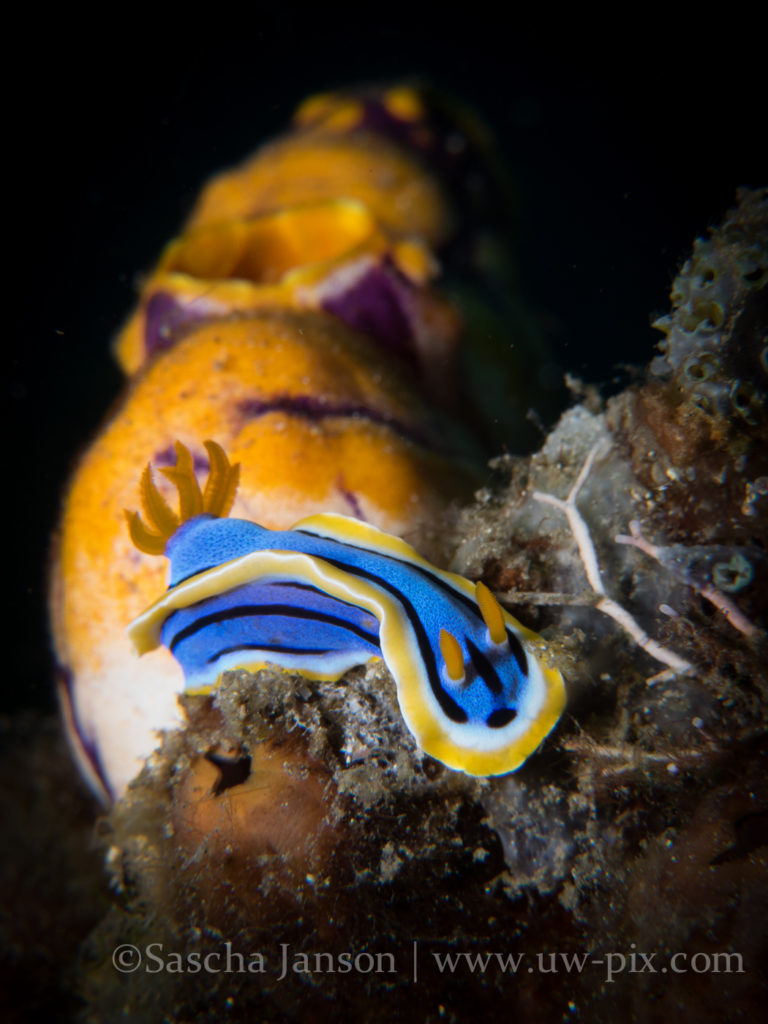
Chromodoris nudibranch (Chromodoris annae) in front of Tunicate shot with S120 in manual mode (f8, ISO80, 1/800sec, ND filter ON, 1x INON UCL 165 macro lens, 1x INON D2000 strobe)
Shooting with LED lights:
If you’re shooting with strong LED lights, you can shoot in Av mode, if you want to be more creative, shoot in manual mode. The good thing about shooting with constant lights is that you can see the light before already, so the light-meters work! Good starting settings for shooting in AV mode are:
F5.6 for getting a relatively good depth of field (If you have powerful enough lights, and you get close, you can even shoot f8!)
ISO 160 or 200 don’t go higher than 320, or you will get a lot of noise
ND filter OFF – you shouldn’t use the ND filter when shooting with LED lights
Exposure compensation should be at -2/3 – that will be a good exposure underwater.
should be at -2/3 – that will be a good exposure underwater.
All the other settings should be the same as above
The camera will now change the shutter speed to get the desired amount of light. If the shutter speed is slower then 1/60sec you have to go up with the power of the LED or change the ISO (higher number) or choose a larger aperture (lower F-number).
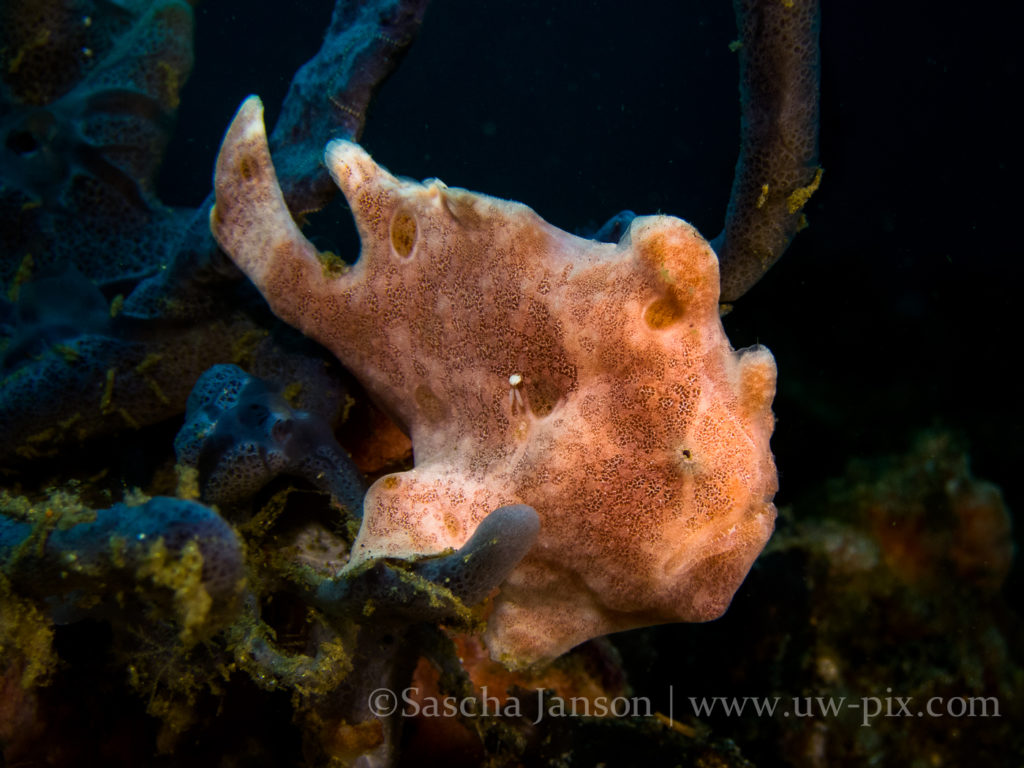
Painted frogfish (Antennarius pictus) shot with S120 in Av mode (f5.6, ISO160, 1/640sec, +/-(Exp.) -2/3,1x SOLA 4000, 1xSOLA 1200video)
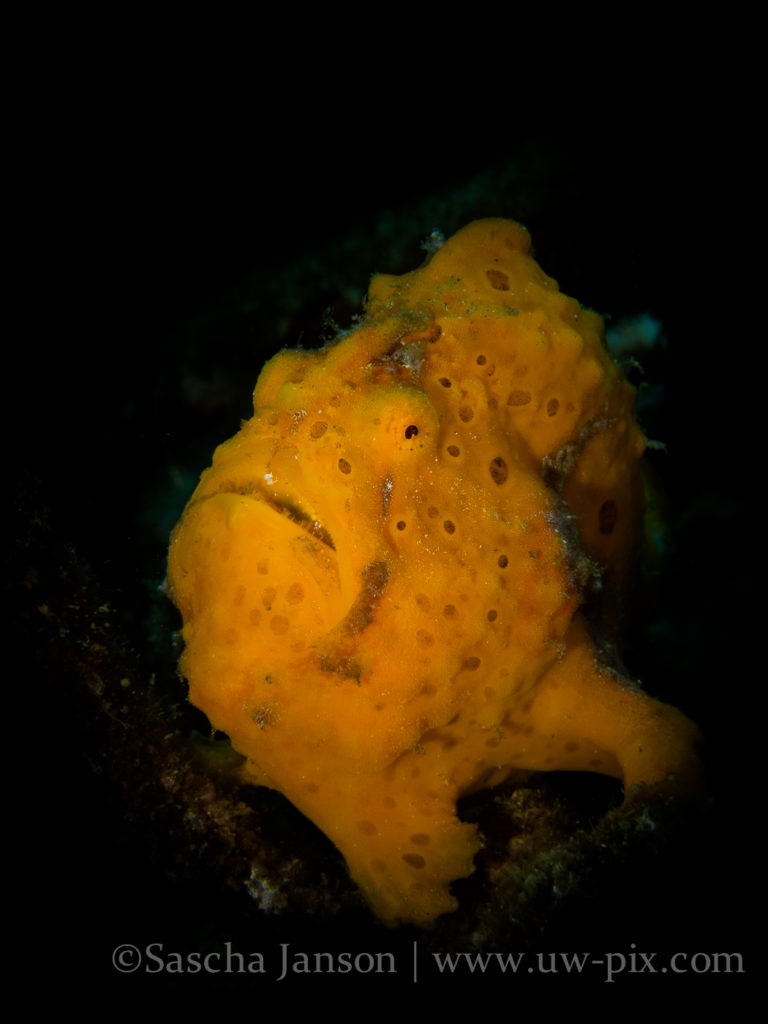
Painted frogfish (Antennarius pictus) shot with S120 in Av mode (f5.6, ISO160, 1/1650sec,+/-(Exp.) -2/3, 1x i-Torch Pro6+, 1xF.I.T. 2400WSR on spot)
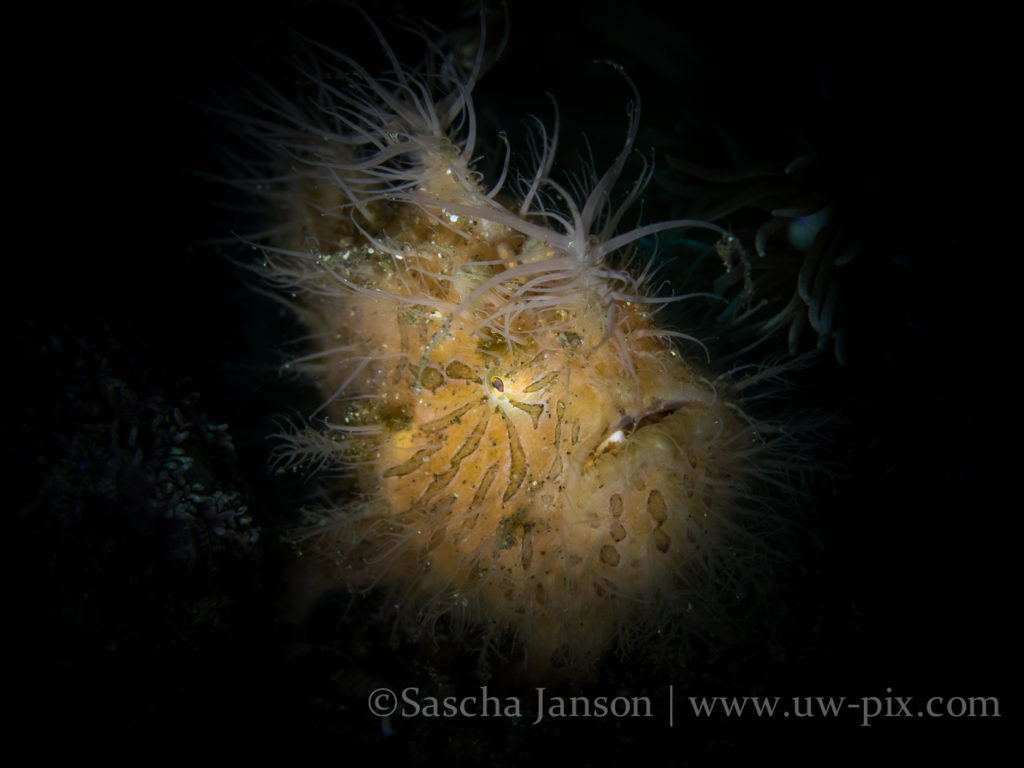
Hairy frogfish (Antennarius striatus) shot with S120 in Av mode (f5.6, ISO160, 1/1250sec, +/-(Exp.) -2/3, 1x F.I.T. 2400WSR on spot)
Here are some other settings I recommend setting the camera to (You’ll find these in the Menu):
AF Frame – 1-point or Center Don’t leave this setting on Face AiAF, because most likely the camera will not recognise the critters’ faces 
AF Frame size – Small For shooting tiny subjects it’s easier to focus on the desired area
Digital zoom – OFF Don’t use the digital zoom, as it’s similar in quality to just cropping in post-production.
AF-Point Zoom – OFF This is my personal preference, some people like having an enlarged centre focusing area when focused, I prefer to only get the green square. Play around with it and see what you like better!
Servo AF – OFF I prefer to have the camera only focusing once when I half-press the shutter, so I can rock in and out to get the subject in focus (while keeping the shutter half-pressed). If you switch the servo AF on, the camera keeps focusing while half-pressing the shutter. If this function is set to on, the frame turns blue when in focus, if it’s off, the frame turns green when in focus.
Continuous AF – ON It can be helpful to keep this function on. It allows the camera to focus continuously without half-pressing the shutter button. It will focus faster when you finally half-press your shutter button to take the image. It also uses more battery, if you want to save battery power, switch it off.
Touch Shutter – OFF (only S110 / S120) You cannot use the touch screen underwater, so no real use for that.
AF-Assist Beam – OFF The beam will be blocked by the housing, so not really useful 
MF-Point Zoom – on It enlarges the center focusing area for easy viewing at all times when shooting in manual focusing mode.
Safety MF – ON This refines the manual focusing when the shutter is half-pressed. Switch it OFF if you don’t want that.
Flash Settings If you are shooting in Manual Mode with an external strobe, set to minimum power to save battery life. Switch OFF the Red-Eye Lamp.
Spot AE Point – AF Point Calculates exposure using the selected AF point (only works in AUTO-modes, useless in manual mode).
Blink Detection – OFF The camera most likely will not detect the critters’ eyes, so no use.
i-Contrast – OFF This function is useless unless you are shooting in Auto ISO mode. However, Auto ISO is not recommended. You will get noise in your images when the camera automatically chooses a higher ISO in darker underwater environments.
IS Mode The Image Stabilizer might be helpful if you are shooting at slower shutter speeds if you’re shooting a moving object, or when shooting video.
Record RAW + L – ON This function allows the camera to record simultaneously a RAW file + a large JPEG file. I strongly recommend shooting in raw, read this article if you want to know why.
The shutter speed will not go slower than 1/60sec if the flash is on.
